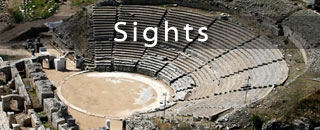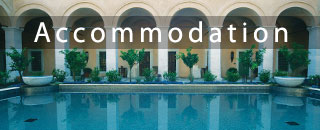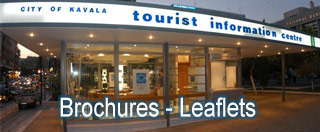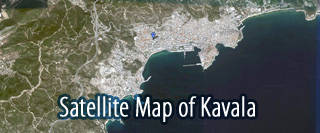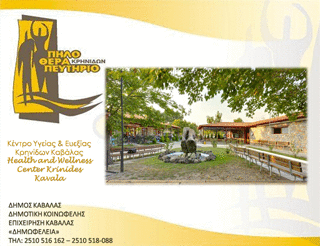History of Kavala
 |
 |
 |
In historical times the people of neighbouring Thassos established a colony in the mid 7th century BC on the same hill. It was named Neapolis and was primarily intended to secure commercial control of the straits between Thassos and the mainland and to exploit the gold of Mt. Pangaion. Because of its privileged position and, above all, its commercial harbour, Neapolis enjoyed great prosperity. It acquired economic independence from the island and minted its own coins, maintaining friendly relations with Athens, the major power in the region, as a member of the Athenian League.
In the years of Macedonian domination of the region (4th century BC) the city lost its independence and became the port of the neighbouring Macedonian city of Philippi.
In Roman times the city continued to enjoy considerable prosperity as a major commercial station along the Via Egnatia, as well as the port of Philippi.
During the Byzantine period – probably during the 8th-9th centuries AD – the city was re-named Christoupolis, reflecting the spread of the new faith after St. Paul’s visit to the city in 49-50 AD. Remains of the Byzantine fortifications can still be seen at many points on the hill of the Panayia neighbourhood, as-well as the imposing Castle, within which a large circular tower has also survived.
Christoupolis was prey to numerous assaults by Slavs, Franks, Venetians and Turks. In 1391 it was’ seized by the Ottomans and from the end of the 15th century was known by its current name, probably because as an important station on the Via Egnatia it served as a resting point for the travellers and their horses. The Turks repaired the Castle and walls of Kavala and in around 1550 constructed the large and imposing aqueduct (Kamares) which has survived in excellent condition. It was the work of Suleiman the Magnificent 11520-1566], built on the traces of the old Byzantine walls, consists of 60 arches of four different sizes and at its highest point stands 52 metres high.
Kavala was the birthplace, in 1769, of the founder of the last Egyptian dynasty, Mehmet Ali. He lived in the city for many years and his home is now a museum, standing at the top of the Panayia district hill, close to the church of the same name. Mehmet Ali was a great benefactor to the city, erecting the poorhouse (Imaret) in 1817, which also functioned as a religious school and boarding school. A remarkable example of Islamic architecture, the building now belongs to the Egyptian state and is now being converted into a luxury hotel. Visitors can admire it as they ascend the hill towards the Castle.
In the Asia Minor Catastrophe of 1922 some 25,000 Greek refugees settled in Kavala, swelling the population of the city significantly. At the same time the city was enjoying great economic prosperity as a major centre for the processing of tobacco and its sale throughout the whole of south-eastern Europe. Numerous foreign tobacco merchants settled in the city, building homes and warehouses. A fine example of the houses they built is the residence of the Hungarian tobacco merchant Baron Pierre Ertzoch, dating from 1890, which now houses the City Council offices on Kyprou St., behind the War Memorial.
Next to the Town Hall is the home of the city’s Social Club, which was built in 1909 and now houses the public library. Further along the same street is the mansion of the tobacco merchant D. Tokkos, built in 1879 and now home to the 12th Ephorate of Byzantine Antiquities.
source: www.remth.gr




